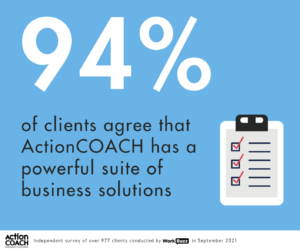How to Increase Cashflow in Your Business17 Ways
How to increase cashflow, is often a question we are asked by business owners, when we first start working together. Positive cashflow is the lifeblood of any business, ensuring smooth operations, supporting expansion, and reducing financial stresses. Whether you’re a startup or an established enterprise, maintaining a steady flow of cash is crucial.
Here are some practical strategies to enhance the cashflow in your business:
Analyse & Optimise Your Cashflow:
Forecasting:
Regularly forecast cashflow to anticipate future needs, making it easier to manage finances proactively.
Regular Reviews:
Periodically assess your cashflow statements to understand inflow and outflow trends, making adjustments as necessary.
Prompt Invoicing:
Bill clients as soon as services are rendered or products are delivered. The quicker you send out invoices, the sooner you’ll likely get paid.
Improve Payment Terms:
Encourage early payments by offering discounts.
Implement late fees for overdue payments.
Shorten payment terms, such as moving from net-60 to net-30 days.
Inventory Management:
Hold only as much inventory as necessary, as excess stock ties up cash. Use inventory management systems or just-in-time inventory practices to streamline.
Reduce Operational Expenses:
Identify areas to cut costs without compromising quality. Consider renegotiating contracts, opting for bulk purchasing, or using energy-efficient equipment.
Expand Revenue Streams:
Diversify product or service offerings.
Enter new markets or demographic segments.
Offer upsells or cross-sells to existing customers.
Lease Instead of Buy:
Leasing equipment or property can be a cost-effective way to free up cash rather than making large capital expenditures.
Consider Subscription Models:
If applicable, switch to a subscription or retainer model. Consistent, recurring revenue can stabilise cashflow.
Pursue Business Financing:
Short-term loans, lines of credit, or invoice financing can provide immediate cash, but always be aware of the interest and terms.
Manage Debt Efficiently:
Refinance or consolidate business loans to secure lower interest rates or better terms.
Embrace Technology:
Use digital accounting tools, payment gateways, and e-invoicing systems to streamline financial processes and reduce errors.
Outsource Non-Core Activities:
Consider outsourcing functions like HR, accounting, or IT, which can sometimes be more cost-effective than maintaining in-house teams.
Negotiate with Suppliers:
Try to extend payment terms or negotiate bulk order discounts with suppliers. Building strong relationships can lead to more flexible payment schedules.
Review Pricing:
Ensure your products or services are priced correctly. Periodically assess market rates and adjust your pricing accordingly, always considering the perceived value to the customer.
Boost Marketing & Sales Efforts:
Increase investment in high-return marketing channels. More sales mean more cash coming in.
Maintain an Emergency Fund:
While it may seem counterintuitive, having a reserve can help you manage unforeseen expenses without affecting the flow of cash.
The Causes of Cashflow Problems in a Business
Cashflow challenges are common in most businesses at some point, understanding the root causes of these issues is crucial to the first step in addressing and preventing them.
Here are some common causes of cashflow problems and why they occur:
Poor Sales & Revenue Generation:
A primary reason for cashflow problems is simply not selling enough. Whether due to ineffective marketing, strong competition, or an inferior product/service, weak sales figures directly impact the flow of cash.
Excessive or Unplanned Expenses:
Sudden, unplanned costs or consistently high operational expenses without a corresponding increase in revenue can quickly drain a business’s funds.
High Levels of Debt:
Taking on excessive debt or unfavourable loan terms can lead to significant monthly repayments, stressing the business’s flow off cash.
Overinvestment in Inventory:
Stockpiling too much inventory ties up funds in unsold goods. If these items don’t sell quickly, cash remains inaccessible.
Inefficient Accounts Receivable Process:
Delayed invoicing, lax credit terms, or a lack of follow-up on outstanding invoices can lead to delays in receiving payment from customers.
Bad Debts:
Offering credit is a double-edged sword. While it might boost sales, it can also lead to bad debts if customers default on their payments.
Rapid Expansion:
While growth is usually a positive sign, expanding too quickly can stretch resources thin, leading to cashflow problems.
Failure to Forecast:
Not preparing or regularly updating a cashflow forecast can lead to surprises, making it difficult to anticipate and manage shortfalls.
Market Fluctuations:
Seasonal changes, shifts in market demand, or broader economic downturns can impact sales and, in turn, the flow of cash.
Mispricing of Goods or Services:
Pricing too low can impact profitability, while pricing too high can deter customers. Either scenario can result in reduced cashflow.
High Overhead Costs:
Fixed costs like rent, salaries, and utilities can become burdensome, especially if revenue doesn’t match or exceed these expenses.
Failure to Adapt:
Not staying updated with market trends or technological advancements can lead to obsolescence, affecting sales and the flow of cash into the business.
Ineffective Financial Management:
Inconsistent record-keeping, not reviewing financial statements, or failing to adjust strategies based on financial data can lead to poor cashflow management.
Lack of Financial Reserves:
Without a buffer or emergency fund, any unforeseen expenses or downturns can immediately lead to a cashflow crisis.
External Factors:
Unexpected events, such as global pandemics, natural disasters, or major economic shifts, can disrupt normal business operations, affecting cashflow.
In conclusion
How to increase cashflow in your business isn’t about hasty decisions or massive overhauls. It’s about constant vigilance, periodic assessment, and being responsive to the market’s needs. Adopt a mix of short-term and long-term strategies, and you’ll find your business in a much stronger financial position.
By staying informed and proactive, businesses can navigate the complexities of how to increase cashflow and set themselves up for sustained success.






